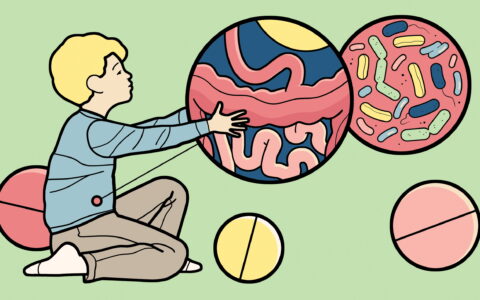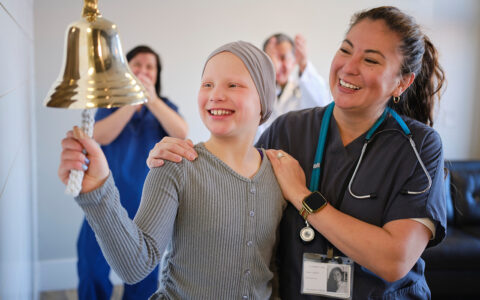Inflammatory T cells and their produced cytokines have become drug targets for juvenile idiopathic arthritis (JIA) based on their known role in disease pathogenesis.
But precisely which T cell-affiliated products are best targeted with which particular drug has not been well-delineated.
To address this gap, pediatric rheumatologist Anna E. Patrick, M.D., Ph.D., is conducting a series of research studies to discover more precisely the mechanisms by which JIA develops.
“If we understand what is happening on a genetic and molecular level in children with various phenotypes, the hope is that we can prescribe the right drug the first time and prevent much of the joint damage and relapses that occur in this disease.”
“If we understand what is happening on a genetic and molecular level in children with various phenotypes, the hope is that we can prescribe the right drug the first time and prevent much of the joint damage and relapses that occur in this disease,” Patrick said.
JIA is known to be tied to immune activation and increased levels of IL-17 – the proinflammatory cytokine interleukin 17. But a lack of knowledge about the path to development for those inflammatory T cells and cytokines hinders personalized treatment for JIA patients, she said.
In an important study on T cell activity, Patrick and her team polarized T cells to become T helper (Th1) cells in blood samples from children with and without JIA. They observed pathogenic levels of IL-17 and abnormal inflammatory Th1.17 cells being generated in the JIA samples.
“Our data provides a tool for studying the development of heterogeneous inflammatory T cells in JIA under polarizing conditions,” Patrick said. “We hope this will be a steppingstone to identifying diagnostic markers and drug targets.”
Toward Targeted Drug Choices
JIA is an inflammatory disease with phenotypic heterogeneity. Severity can range from attacks on a few or many joints, with risk of joint damage like that of rheumatoid arthritis. It may also affect the eyes, potentially causing uveitis or iritis, which can result in scarring or vision damage.
Proven therapies include disease-modifying anti-rheumatic drugs (DMARDs), like methotrexate, and multiple biologics, including etanercept. These therapies target T cell activation and inflammatory cytokines. Most JIA patients achieve remission with therapies, but many have chronic arthritis and relapses of disease that require multiple DMARDs or medication switching.
“Some of these children have to be switched from drug to drug,” Patrick said. “Most often we just haven’t hit on the best drug for their particular needs and physiology. That’s why it is so important for us to uncover the mechanism, including the underlying genetics of the disease and what variants control its manifestation in different children.”
T Cell Differences Uncovered
In Patrick’s study, she induced polarization of T cells to become Th1 and Th17 cells, both implicated in upstream inflammation processes in JIA and other autoimmune diseases. Mononuclear cells from peripheral blood samples were donated by prepubescent children with and without JIA. Study participants were mostly female, consistent with the disease prevalence, with an average age of five years. On average, members of the JIA cohort had none or one joint actively affected.
“The study group were children who were largely doing very well,” Patrick said. “Many of them are on medications and had very few active joints. So, you might think it likely that we would find nothing different from the control group.”
The researchers did find that the two groups had the same frequencies of initial T cells and the same T cell proliferation. But upon polarization of the initial T cells to Th1 cells in the JIA group, the T cells became not only Th1 cells but also, inappropriately, became Th17 and Th17.1 cells, producing excessive proinflammatory cytokines IL-17 and IFN-γ (interferon gamma).
“This is really important because IL-17 is thought to cause disease and disease worsening in arthritis and other autoimmune diseases,” Patrick said. “We hope that by using this information, we can better understand which patients will better respond to treatments with common therapeutics for JIA, including drugs that already exist that target IL-17.”
Diving Into Genetics
Patrick and her team are now testing how the Th1.17 cells are made during polarization. They are also exploring genetic drivers of the disparate processes found between children with and without JIA.
“Our studies to date highlight how various cell populations and their evolution are involved in JIA inflammation,” Patrick said. “Yet, how and why these cells change in the ways they do under polarizing conditions is still unclear.”
Patrick said the team’s next major next step is to explore the genes, mutations, genetic modifiers and epigenetic factors driving the pathogenesis of JIA.
“Ultimately this can lead to developing personalized approaches to diagnosing and treating these children.”





